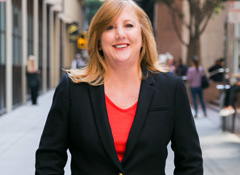Opinion: Why this is PR’s film moment
Mark Lonsdale, producer at Leap Films, marks the start of the Cannes Film Festival by revealing why PR professionals are beginning to embrace the use of film.

Mark Lonsdale
Let’s call it a slow motion revolution! Slowly but surely, in uncertain steps, we see PR embrace film. The impact of moving images as a scroll stopper and conversion builder has never really been in doubt, but the sight of film on a PR agency home page is still as rare as spotting a penguin in the desert!
All can see the value of moving images, but budgets, tradition, inexperience and fear of the unknown appear to be at the heart of the slow lane approach to film as a campaign leader and potent branding tool.
Of course, it’s not easy to get it right and when budgets are tight and expectations are high, it’s easy to see why it often ends up on the “maybe” list rather than the “action” one. But film storytelling, with a brand at its heart, can engage in a unique and immediate way across all the platforms.
The big numbers
The stats are certainly stacking up on this. Last year, online video traffic made up 69% of all global consumer internet traffic (Cisco) and by 2019 it will account for 80% (WordStream). After watching a video, 64% of users are more likely to buy a product online (RendrFX).
Marketers who use video grow revenue 49% faster than non-video users (VidYard). Including video in a landing page can increase conversion by 80% (EyeView) and four times as many customers would rather watch a video about a product than read about it (Animoto). Encouragingly, the recent PRCA Digital Survey showed video content as a significant item now on in house budgets.
For those who have fully embraced film the benefits are tangible and have longevity:
- Kevin Stone, sales director at Ben Sherman: “With film, the great thing is you can engage the target audience so directly. Of course, you have to get the tone, casting, and details just right but then the results are great in terms of views, click-throughs and conversion. You have to do your homework and put the product into a world they, your punters, connect with.”
- Kirsty Leighton, founder of Milk & Honey: “We know our clients are coming to expect film as an option, we include visual media in all of our campaigns. Audiences and customers are changing, it’s a smartphone world we live in and we all love intelligent, engaging stories that make us stop, think, and feel something. As an agency, we are prioritising film and broadcast.”
- Candace Kuss, director of social at H + K Strategies: “Our agency has always created brand content for our clients and what I love is that their ambition for how they tell their story keeps getting stronger. For example, our sports team made a 17 minute documentary movie called Sevens From Heaven as part of our work supporting the HSBC World Rugby Sevens Series. The trend is very much toward investing in more meaningful video content and less of the lightweight ephemeral clips.”
Getting set
One big pothole on the road is the “let’s-get-someone-to-film-it” approach, where a generic piece of film is shot (very cheaply) and promoted. Audiences see this for what it is, placeholder footage that barely holds their attention: familiar, formulaic and flat. So, what is the answer?
Here are some starting points:
- Tell stories that reflect brand values. Develop short scripts and stories that connect with your target audiences, there is a world of difference between a story and footage. We all love a good story, whether it’s John Lewis at Christmas or Nike’s latest “Nothing Beats a Londoner” clip.
- Get the address right! If you are sending out a brand message make sure it belongs to the world of the customer. This is about tone, styling, casting and voice. With film, design is vital, the devil is in the detail and this doesn’t have to cost a fortune.
- Think modular. This is the moment for modular content, where a smart story can be re-versioned for each selected platform. Instagram? Let’s connect with these communities with a 30 second spot. Facebook? Something longer and a set of behind-the-scenes clips too.
All of this springs from the same beautifully shot footage.
Talk to the professionals. If you care about your client and the quality of the content you produce then it’s time to arrange a coffee with a producer or two.
Start with a pilot project, build a partnership. The producer opens the door to great camera opportunities, brilliant young production designers and editors. They like coffee too!
So, the first leg of this journey to conversion is turning all those smart media savvy PR people into film collaborators – because today, we all have screens in our pockets.







